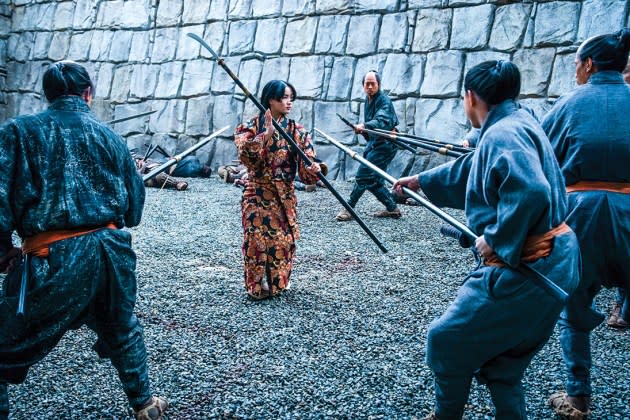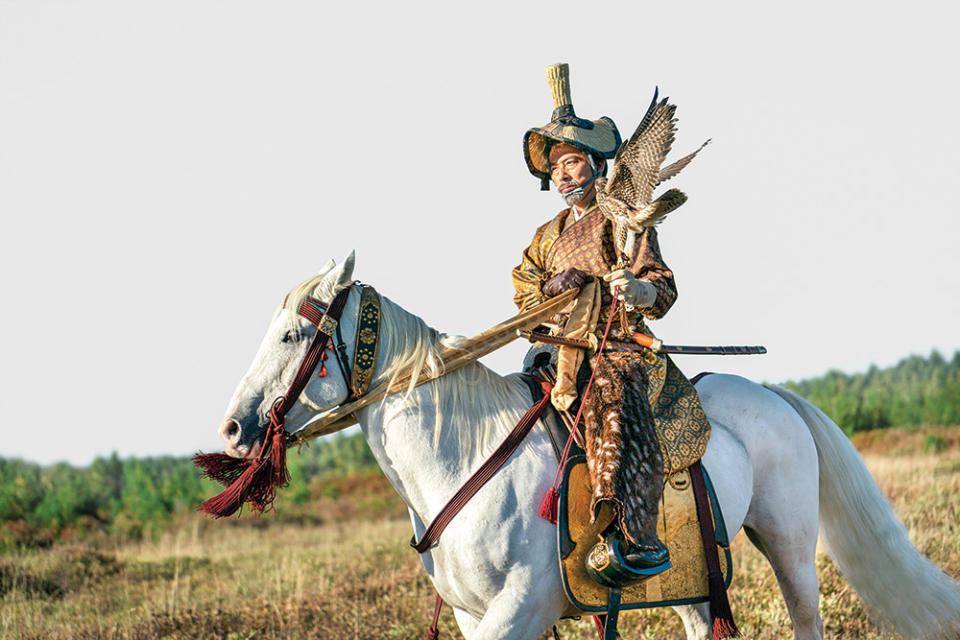‘Shogun’ Stunt Coordinator Wanted “No Back Flips or Crazy Hollywood Ninja Stuff” in Fight Scenes

As a stunt performer with more than 300 credits to his name and three decades of stunt coordination experience, Lauro Chartrand-DelValle was the obvious choice to teach the cast of FX’s Shogun how to battle. Between an avalanche, shipwrecks and explosive battle training, the stunt coordinator’s scope of work was broad, but while the series itself has a majestic range, Chartrand-DelValle kept the kills intimate. “We were all about one cut, one kill,” he states. THR spoke with him about traveling to the 1600s for what he calls his “dream job.”
How did you research the time period?
More from The Hollywood Reporter
Paul Mescal, Rita Moreno and Quentin Tarantino to Be Honored at 2024 Academy Museum Gala
Ryan Gosling's Viral Beavis and Butt-head Sketch Was Years in the Making
How to Roast a Comedian and Other Trade Secrets From Hollywood's Top Production Designers
Because what I had done before, in The Last Samurai, was later in history, I read up on this particular time period. They also brought in specialists from Japan that we learned so much from. But every step of the way, just when you thought you knew something, you really didn’t know it. We were learning along the way and adjusting accordingly.
How long was the training boot camp, and what did it entail?
It took us six to eight weeks. It was very intensive with sword, archery and spear work and military movement and horse work. All the actors had seiza training, where they had to sit properly and walk properly. Even the actors who came from Japan had to learn that. What extended us to eight weeks was taking the actors and some of the stuntpeople out to get better on the horses. It was pretty extensive and very intense.
Did anyone come in with previous knowledge?
I had a lot of stuntpeople with previous knowledge, and then, of course, Hiro Sanada [who plays Lord Yoshii Toranaga]. Wow, that guy is basically a historian. Along with my sensei, Fumio Demura, he oversaw the boot camp with us. Then I, and the rest of my team, would make corrections. The intensity of it just had to be correct when we got to camera.

What’s the biggest challenge of teaching someone such an intricate skill in such a short time?
Their ability to capture the movement. Some people are more agile and more physical than others. You just hope that you get someone who has an athletic background. Anna Sawai [who plays Mariko], for instance, she’s a dancer and a martial artist who came to us basically trained. It was just a matter of choreography. And being a dancer, she caught on to choreography like that. (Snaps fingers.) She was so humble, like, “Oh, I don’t know if I can do this. All that looks very difficult.” And in five minutes she had it. It was like, “OK, Anna, whatever you say.”
What was unique about her fight scenes?
The specialists and historians were adamant that she couldn’t take big steps. [A woman in that time period] would basically be so disgraced that she would commit seppuku if the kimono came open and you saw bare legs. That was just too shameful. But when you’re in a life-and-death situation, would you shuffle? They would discuss that with us: “Well, they didn’t really have a fear of dying.” They let us take a little bit bigger steps now and again, especially when Mariko really went wild in her fight scene, but only to the extent that nothing would show. If the kimono came open too far, we had to go again.
Could you have done the fight scenes in episode nine had Anna not come in with prior knowledge?
We would’ve had to double her a lot more. I had a great stunt double for her, Darlene Pineda, and she helped us set up all the choreography, do all the rehearsals and help teach Anna the choreography, but once Anna caught it, she did everything. She had it so down by the time [we shot] that it was second nature for her. Once she added her performance and her acting, it blew us all away. I had tears when she was performing it.
Is there a scene you’re particularly proud of?
I had a lot of fun with the shinobi sequences [in episode nine]. They were right on point with what I wanted to do, as far as no back flips or crazy Hollywood ninja stuff. They were there in stealth, and they were there to kill. We had all kinds of great sneaky movement throughout the castle, some quick kills and moving on to the next one. If somebody ran away, they’d catch him with a chain around his neck and pull him down. Mariko and Blackthorne [played by Cosmo Jarvis] managed to wake up in time and have a great fight scene to fight back and then try to escape the castle. It built and it grew. It came out great.
Is there an art to keeping things muted?
The art was retraining my stunt guys, because they would come from other shows and they’d say, “Oh, but Lash, we can do this and we can do that.” I’m like, “Nope, none of that. Keep your feet on the ground.” It’s just getting everybody dialed in to the realism and making it stay with the story. The most important thing for us was no gratuitous fighting.
What was the biggest challenge?
Directing second unit and making everything match with main unit. We had some larger sequences in the first episode, the storm sequence and the man overboard and rescue sequence that happened in five different locations. On one side of Vancouver Island, I had to build a tower and a safety line and put one of my stunt guys in the ocean, making sure he wasn’t getting smashed against the rocks in the scene where Yabushige [played by Tadanobu Asano] fell into the water and was going to commit seppuku. We did a lot of the main unit in a tank in Port Moody where we built a cliff face into a water tank, and huge wave machines were making it match perfectly to the ocean. We had another cliff on the other side of the city — we had to do the initial rappelling and falling there. At the [Swiss Canadian Mountain Range] in Coquitlam, we had another 9-foot cliff piece where the actors were talking at the top of the cliff and then started to rappel down. We had to make all of them match, and it looked seamless.
This story first appeared in a May standalone issue of The Hollywood Reporter magazine. Click here to subscribe.
Best of The Hollywood Reporter

 Yahoo News
Yahoo News 
